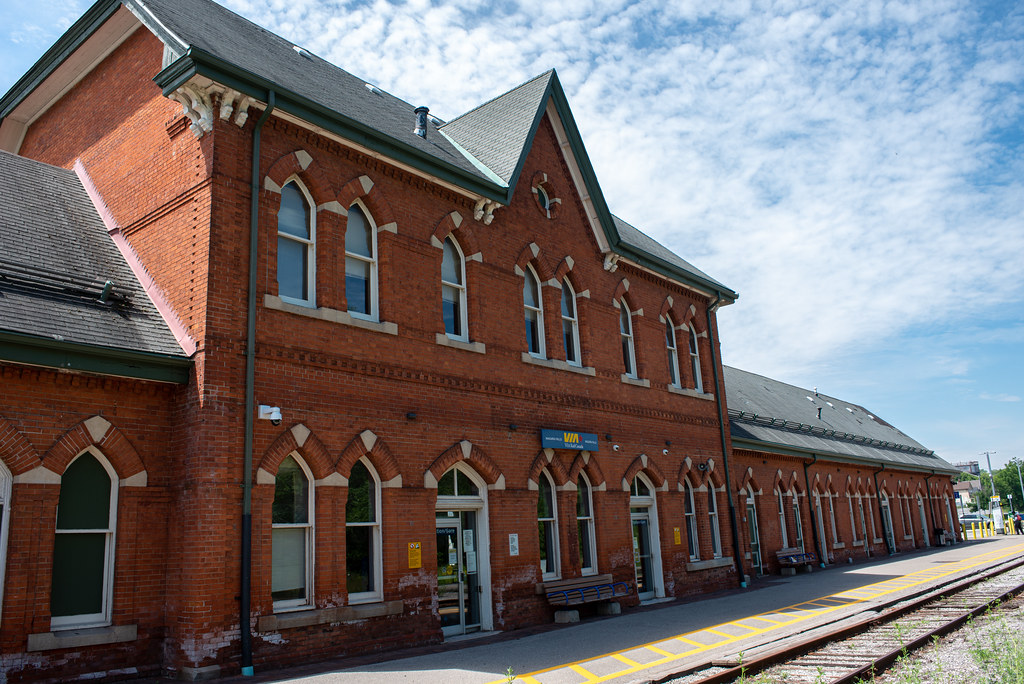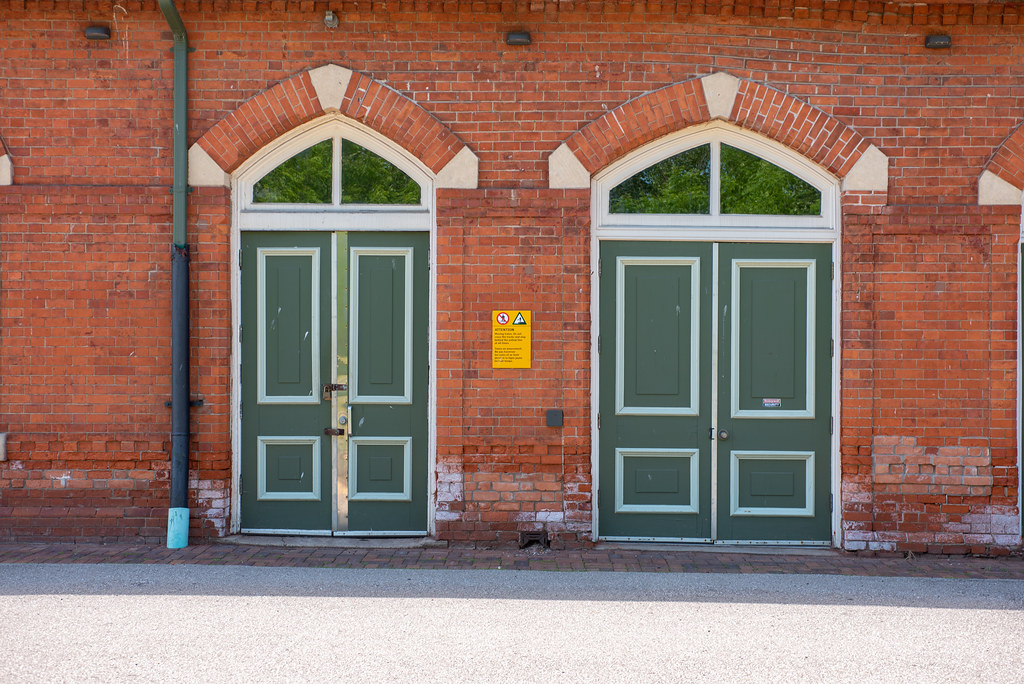I remember the first time I visited the Bridge Street Station in Niagara Falls, not far from the glitz and crowds of the tourist-packed falls area. On a quiet side street off the old downtown of Queen Street, surrounded by run-down buildings, sits one of the last remaining train stations in Ontario that is credited to the Great Western Railway.

Graflex Crown Graphic – Fuji Fujinon-W 1:5.6/125 – Ilford HP5+ @ ASA-200 – Pyrocat-HD (1+1+100) 9:00 @ 20C
The importance of the train station in Niagara Falls is thanks to the Niagara Suspension Bridge. The Great Western Railway completed its mainline in 1854 with great fanfare in Hamilton, Ontario, where its main headquarters and rail yard were located. But to cross the Niagara River, trains had to be rerouted down the Niagara Escarpment and loaded onto rail ferries at Queenston to move the cars into the United States. Until 1855, the world’s first railroad suspension bridge, the Niagara Suspension Bridge, saw completion. An engineering marvel of the time, it served a single track on the top deck while pedestrian and horse-drawn traffic on a lower tier. Being on a terminus, Great Western completed a large wooden station known locally as Clifton Depot. In addition to that, Great Western constructed a large marshalling and traffic yard with freight sheds and a roundhouse nearby. The large station was built to a similar station completed in Hamilton, Ontario, with separate men’s and ladies waiting rooms. There was a station master’s office, a telegraph operator’s bay, and a large baggage room. The station also featured a full-service restaurant and dining room operated by a local family known as the Great Western. In 1879 disaster struck, and the entire station was destroyed by fire.

Nikon D750 – AF-S Nikkor 28-70mm 1:2.8D
Nikon D750 – AF-S Nikkor 28-70mm 1:2.8D
Undaunted and riding high on financial stability Great Western moved quickly to replace the station. Joseph Hobson, the railway’s chief engineer and architect, designed a new station to replace the original wooden station. The new station used the Victorian Gothic style with a brick exterior. The new station featured two-storey centre sections with single storey west and east wings. The station’s roof used a unique jerkinhead style, a combination of hip and gabled styles. Inside the centre, the section contained a round ticket office with separate mens’ and ladies’ waiting rooms. The second floor held the telegraph operator’s bay and station offices. The east wing contained the new Great Western Restaurant, while the west wing contained the freight offices. It quickly became known as the most prestigious station on the Great Western Railway and earned Joseph Hobson a name. Grand Trunk gladly continued to operate the station when they purchased the entire Great Western Railway in 1882. The only change was renaming the restaurant to The Grand Trunk. The restaurant was forced to close in 1909. Canadian National took over the station in 1923. By this point, the station had started to show its age, and it received restoration work in 1939 in preparation for the Royal Tour. During the tour, King George VI and Queen Elizabeth (The Queen Mother) disembarked at the Bridge Street Station.

Nikon D750 – AF-S Nikkor 28-70mm 1:2.8D
Mamiya m645 – Mamiya-Sekor C 45mm 1:2.8 N – Ilford FP4+ @ ASA-100 – Kodak D-23 (Stock) 6:00 @ 20C
With a sharp decline in passenger traffic by the mid-century, Canadian National began cutting passenger services. The separate waiting rooms were combined, and many structures designed to support steam locomotives fell in the 1960s as diesel motive power took over. Surprisingly the station never got a paint job to railroad red. Instead, Canadian National painted it a grey colour in 1967; they also abandoned and closed the second story chopping eighty feet off the western wing. A similar demolition planned for 1976 stayed thanks to a local heritage designation. When Canadian National turned over passenger service to the newly created VIA Rail in 1978, the Bridge Street station was also turned over to the new Crown Corporation. While the station remained untouched, a Federal heritage designation in 1999 freed up funds to completely restore the station’s exterior. The grey paint was stripped away, and the original red brick exterior was restored. GO Trains have called on the station since 2009, and VIA removed all staff in 2012. Today the station remains an automated location with no physical staff on site. Today it is only one of a few remaining stations credited to Great Western Railway; the other is located in Chatham, Ontario. While Woodstock and Sarnia are often credited to Great Western, they were both built after Great Western had been absorbed into Grand Trunk Railway. It remains a testament to Joseph Hobson and the Great Western today.